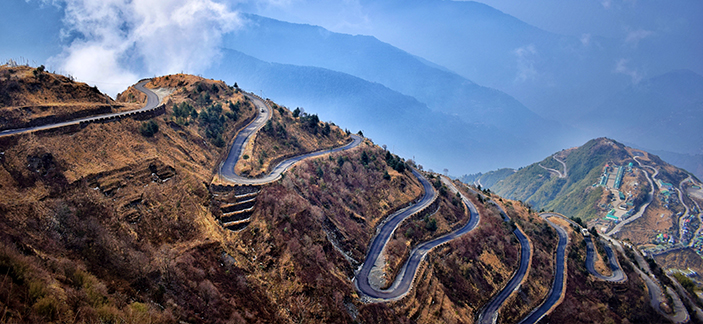call us on967 4109 679

Embodying the rare juxtaposition of history and natural beauty, the old Silk Route to Sikkim marks the ancient mountainous road which connected Lhasa (in Tibet) with India via the Jelep La Pass. The region, partially occupied by the West Bengal and East Sikkim actually derives its historic significance from being the confluence of various cultures.
The road presently administered by the Indian Army assumed a leading role in the amalgamation of the old Chinese, Persian, Arabian, Roman and Greek cultures. A part of the winding track was located in Xinjiang China which served as the meeting point of Oriental and Western Cultures. Though the route has only recently been opened for tourist activities, access to it remains restricted as it’s shared with the international border of China. So, before you contact a Travel agent in Kolkata and head out for well-rounded trip through to the Silk Route Sikkim, let us discover the key attractions f the place. Given below is a glimpse:
A comprehensive itinerary of and around the Silk Route Sikkim should include all the places:
Both Rishikhola and Lingtam are located a few kilometers from each other. Rishikola has been named after the river Rishi. There are no hotels here but one can definitely rely on the comfort of the homestays and the warmth of the residents. One is likely to come across Lingtam before any other attraction along the Silk Route. You can easily spend two to three days here, just immersing yourself in its wondrous views. Checking out the nearby Aritar Lake is a must.
Zuluk or Dzuluk makes for a tiny village along the meandering road and located at around 10,000 feet on the jagged lower Himalayan terrain. It formerly served as the transit point of route. The Zuluk road makes for a rare engineering endeavor with around 32 hair-pin bends. The local Nag temple is a cave-like edifice, making for one of the major attractions here.
Accomodation: You can opt for an affordable and clean homestay (complete with clean blankets and room heaters) at Zuluk and cover areas like Lungthung, Kupup Lake, Padamchen and Tukla Valley during a day trip. 14 kilometers and 11, 200 feet is the gorgeous Thambi, where you can enjoy the sunrise at Mt. Kanchenjungha. Zuluk remains a riot of colors (with wild flowers) from January to April.
Nathang Valley remains another visual spectacle monitored by the Indian Army. Winter is marked by wind waves. Though there are no hotels or resorts here, the locals are trying their best to encourage tourism here. The Sherpas can guide you through all your requirements feasibly.
Accommodation: Pinasha Lodge and Dafter Bungalow are favorable options
Lungthung is around 20- 25 kilometers away from Nathang Valley. A hamlet on the high mountains, this one can turn out to be an ideal sojourn if you are not really interested in visiting Gangtok city.
Exploring the Nature’s attractions can continue with sightseeing. Here is a rundown of the places, sure to catch your fancy along the Silk Route:
Positioned around 5 kilometers away from Nathang Valley, Eagle’s Nest Bunker remains a secluded Army bunker offering you a panoramic view of the sunrise.
Those who are willing to take a trek down the road might visit the Menmecho Lake but you would not really be allowed to take a car there.
The China Market or Sorethang is stacked with woolen jackets and cloths, available at affordable prices.
Ramitey can be explored in all its glory via a walk. Discover pristine gems like Cross Hill, Tinchuley Point, Bhutan Gompha, Rikisum and Silence Valley.